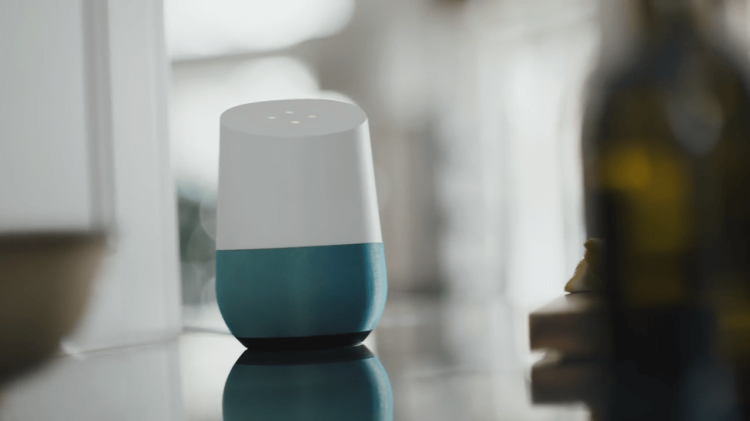testsetset
Amazon’s Alexa made quite a splash in the media since her original release in November 2014. Following the debut of Amazon’s first Alexa-powered device, the original Amazon Echo, seven additional devices have become a part of Alexa’s ever-growing smart-tech family. And there’s no end in sight.
After nearly two years of watching Amazon’s breakthrough successes, the folks over at Google decided it was time to step up and get in the game. While the Google Home is still quite new to the scene (making its first public announcement in May 2016), the device certainly packs a punch.
We all know what Alexa is capable of, but many consumers are still unsure about Google Home. Initial research shows the Google Home connects to over 1,000 smart devices made by 150 companies, which is quite impressive. Also, after running side-by-side intelligence tests on both systems, the Home proved it’s capable of outperforming Echo devices in several key areas.
Here are four reasons why consumers and tech enthusiasts should give just as much (or more) respect to the Google Home as they do to Amazon’s family of digital assistants.
June 5th: The AI Audit in NYC
Join us next week in NYC to engage with top executive leaders, delving into strategies for auditing AI models to ensure fairness, optimal performance, and ethical compliance across diverse organizations. Secure your attendance for this exclusive invite-only event.
1. Music streaming is slightly better
Just like Amazon’s Echo, Google Home simplifies the process of playing music and podcasts. Naturally, the device prefers that its users play content from Google Play Music, but it still allows you to stream from multiple platforms like Pandora and Spotify. Home also tunes into podcasts, news sources, and radio stations. The device is able to stream any audio platform that has an app supported by Chromecast.
For the most part, Google Home and Amazon Echo devices are on a level playing field in terms of audio streaming capabilities. However, the Google Home does have an important advantage over Echo devices: It allows YouTube Red subscribers to stream content from YouTube Music.
2. Chromecast integration is pretty awesome
Google’s Chromecast is a close competitor to other popular streaming devices like Roku, Apple TV, and the Amazon Firestick. Users can pair their Google Home with Chromecast devices to use voice commands to stream content. You can pair the Home with any Chromecast-enabled device to use voice commands to bring up Google photos, Netflix content, TV stations, and YouTube videos.
Google Home also recognizes the names and channels in your cable television package, making it easy to say, “OK, Google, turn on the Golf Channel” with any CEC-equipped television. One of the coolest capabilities of Google Home’s Chromecast integration is that it allows you to switch your TV on by saying “OK, Google, turn on my TV” or by making a specific content request like the one mentioned above.
If you’re in the market for a new setup, most modern TVs readily pair with Chromecast. All you need is an HDMI input and a USB port on the TV and a solid Wi-Fi connection in your home.
3. Google Assistant is just as good as Alexa
Thanks to digital assistants, you don’t have to cut a check every two weeks to get help around the house. Like Alexa, the Home allows users to do cool things like use their voice to set timers and alarms, make hands-free phone calls, and listen to recipes while they’re cooking.
The Home also took a note from Amazon’s Echo by implementing Voice Match, a system that allows users to create multiple profiles for each member of the household. This enables the device to provide a unique experience for all users in a given space. After all, what good is an assistant that doesn’t understand your personal preferences and nuances?
4. Nest makes home automation easy
Google’s Nest is a well-known and widely popular home automation device on the mainstream consumer technology market. The fact that Google now has a smart speaker to integrate with this device is actually really cool. Alexa has her own home automation integrations with companies like Vivint and ADT that make it easy to control and secure your place, but pairing the Google Home and the Nest could offer a more seamless experience as the two devices are from the same family.
If you already have a Nest thermostat, it can easily integrate with your Home device, right out of the box. You can also easily add other Nest-compatible smart devices like light bulbs, ceiling fans, and even washing machines to control your entire home using voice commands.
Consumers are currently obsessed with Alexa, treating her as though she’s the pinnacle of digital assistant technology. Consequentially, other assistants like the Google Home fall by the wayside. However, it’s easy to see that despite its late arrival to the market, the Google Home is just as deserving of accolades as Amazon’s Echo devices.
Kylie Fitch is a freelance writer whose work focuses on automation, smart home technology, and digital lifestyle topics.


